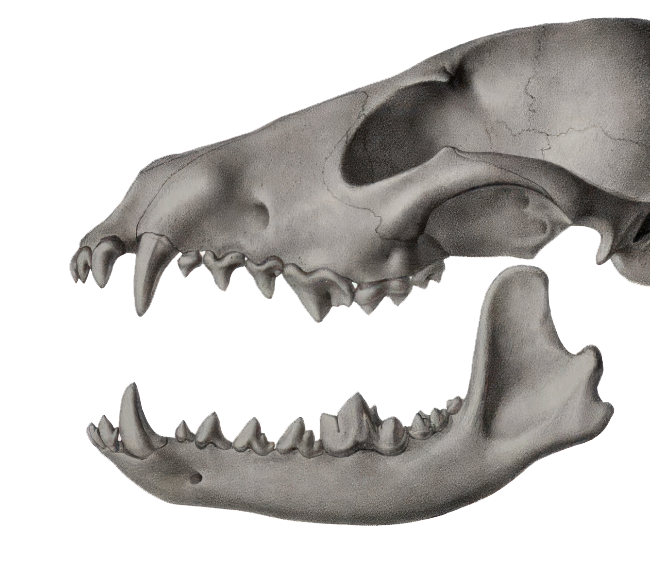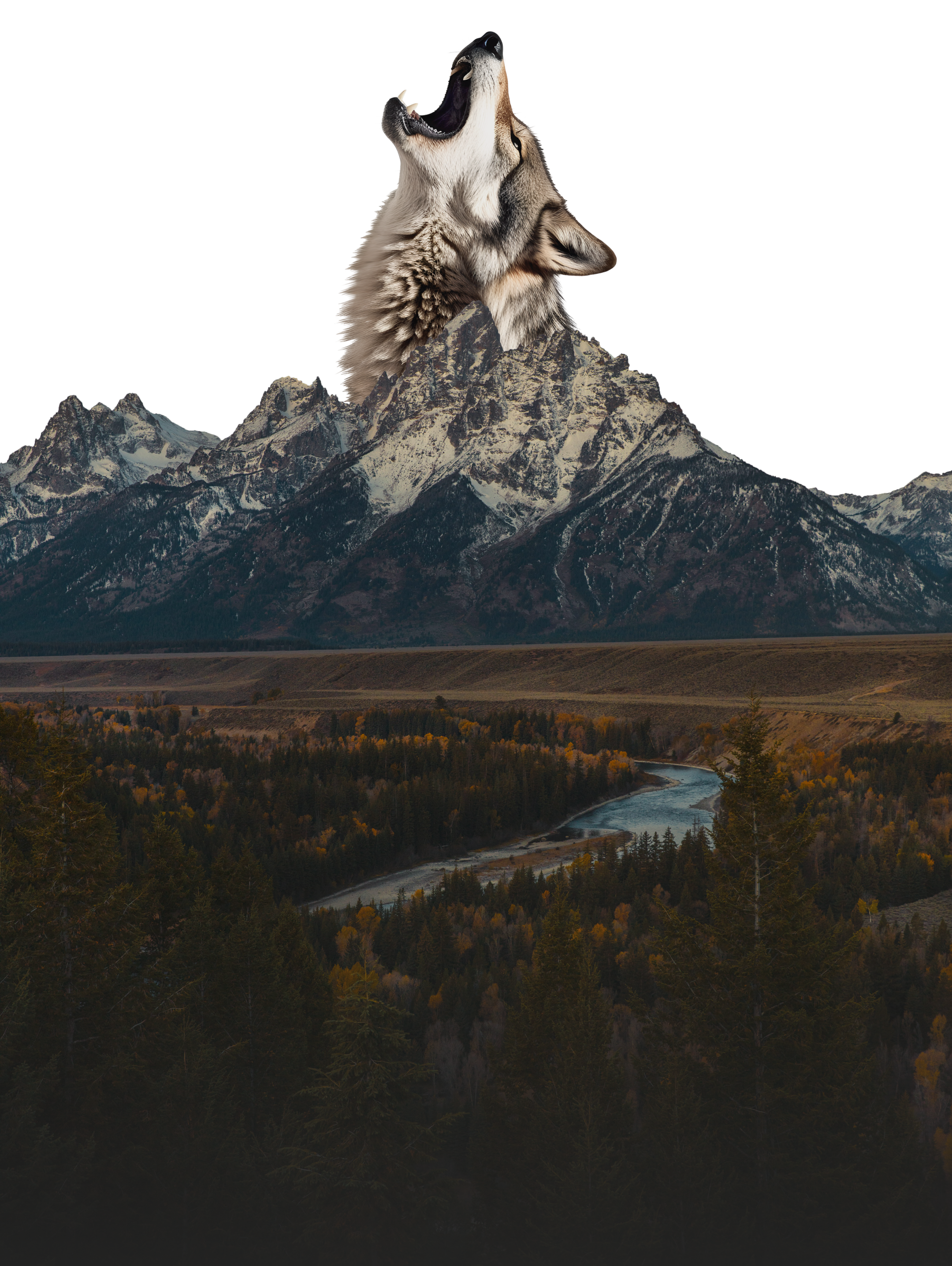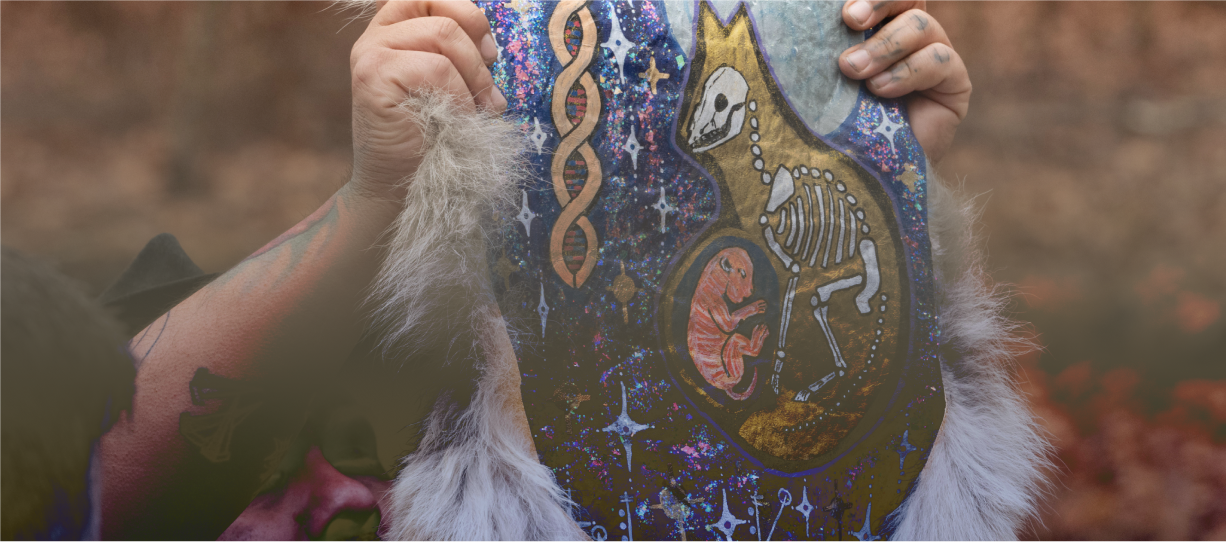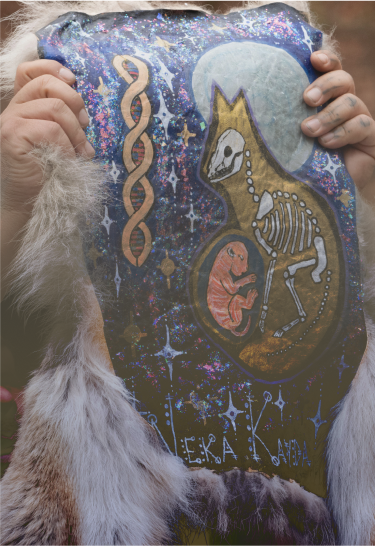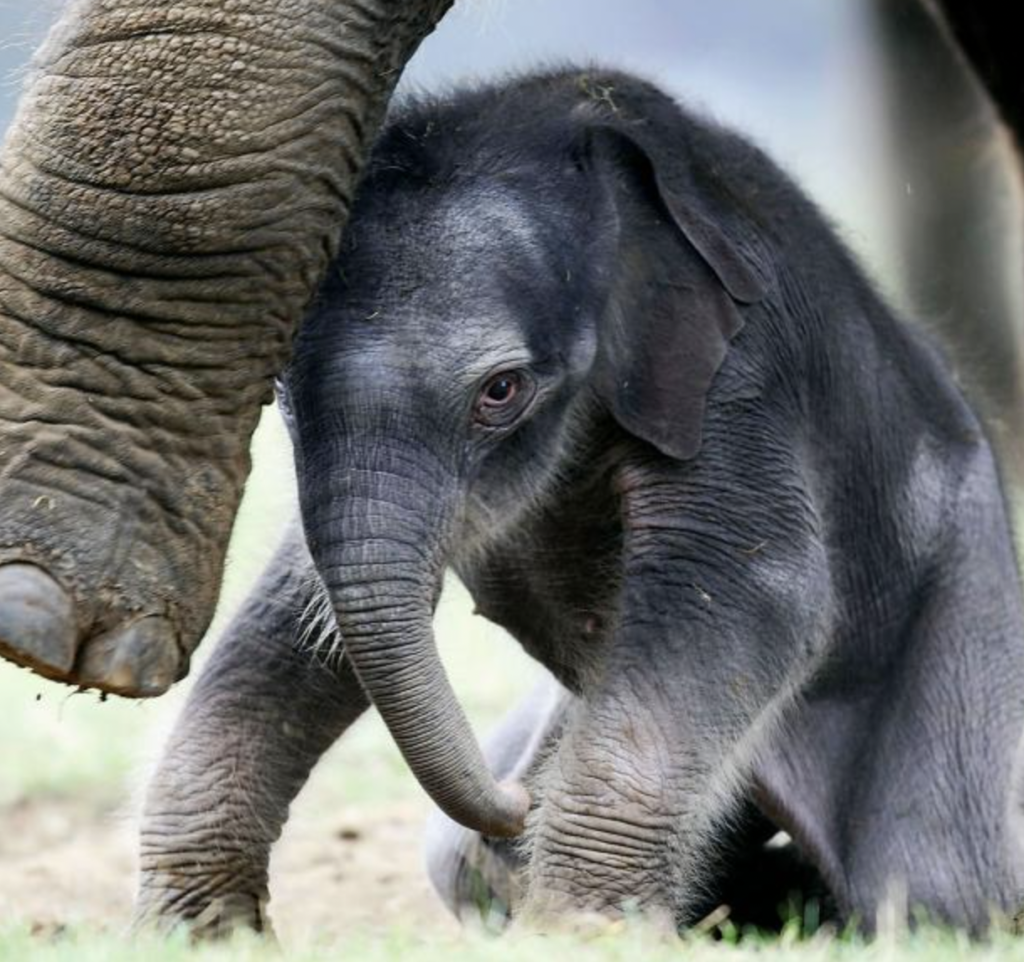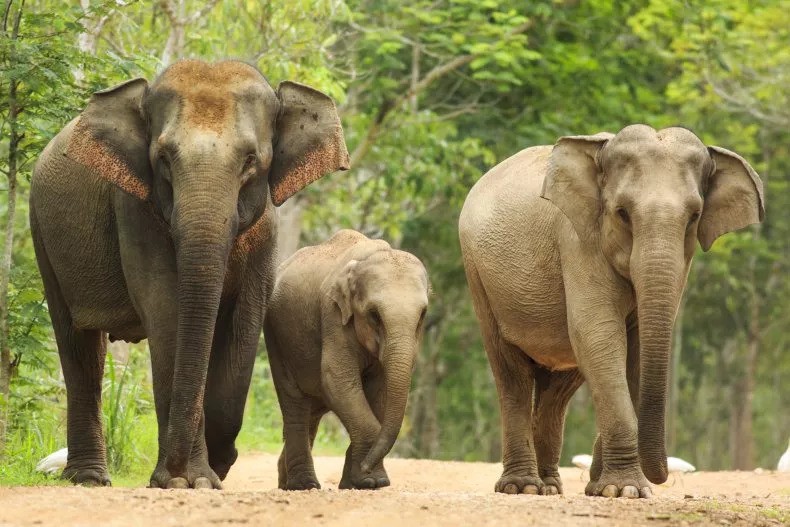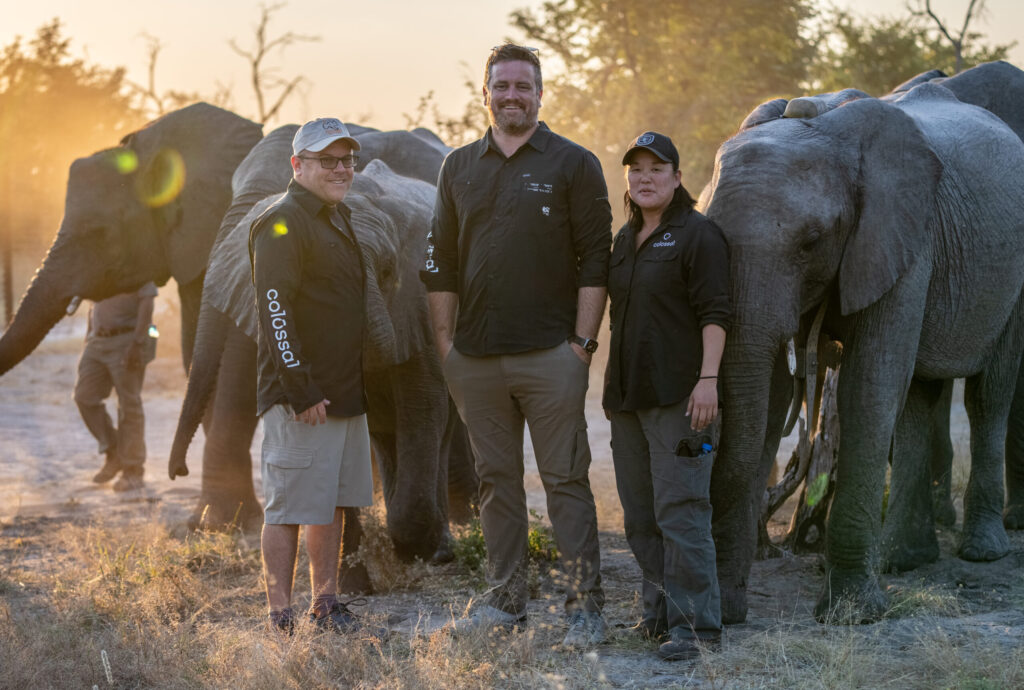





WOlfConservationPartners
[ Colossal's Wolf Conservation Partners ]
[ Colossal's Wolf Conservation Partners ]
SystemsColossal is committed to improving all life on Earth, especially the species we’ve lost and the ones we’re at risk of losing. Find out how Colossal’s internal conservation teams and partners work with endangered species like the gray wolf.
Conservation Nation
Visit Partner Site
Conservation Nation is committed to saving species by making the act of conservation accessible to all. We believe in the fight to save the planet, and know that we all must work together before it's too late.
Re:wild
Visit Partner Site
Re:wild is a force multiplier that brings together Indigenous peoples, local communities, influential leaders, nongovernmental organizations, governments, companies, and the public to protect and rewild at the scale and speed we need.
American Wolf Foundation
Visit Partner Site
Our vision is to see all American wolf species thriving in the wild and coexisting with humans. Our mission is to unite key stakeholders to ensure conflict-free conservation.
Gulf Coast K9
Visit Partner Site
Our vision is to see all American wolf species thriving in the wild and coexisting with humans. Our mission is to unite key stakeholders to ensure conflict-free conservation.
Grizzly Systems
Visit Partner Site
Grizzly Systems, based in the Paradise Valley Montana, makes surveillance systems for motion that matters, not grass blowing in the wind. We focus on modular, low-power, remote sensing devices and encourage security businesses and conservation scientists to put our devices through the ringer.
Wolf Connection
Visit Partner Site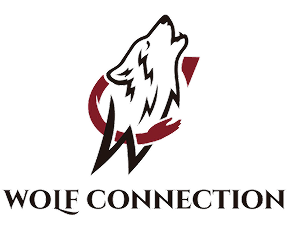
Wolf Connection is the global innovator in facilitating the restorative human-animal relationship with a unique focus on Wolf Therapy®. We are a 501c3 nonprofit organization and wolf sanctuary, empowering all beings to believe in their worthiness, their inner capacity for personal growth, and the power of the pack.
Yellowstone Forever
Visit Partner Site
Yellowstone Forever is the official nonprofit partner of Yellowstone National Park. We protect, preserve, and enhance Yellowstone National Park through education and philanthropy.



Andrew Pask, Ph.D.
Professor of Biosciences at University of
Melbourne TIGRR Lab
[ COLOSSAL SCIENCE ADVISORY BOARD MEMBER ]
"This project demonstrates the awesome potential for advances in genetic engineering and reproductive technologies to recreate lost diversity. Apex predators are critical to stabilizing entire ecosystems and their loss from the landscape can have profound impacts on biodiversity. This project, uses sequences from the dire wolf to de-extinct this iconic apex predator. This work underpins pioneering research that seeks to stabilize ecosystems to prevent further biodiversity losses and to create new methods to actually restore lost biodiversity!"
Andrew Pask,
Ph.D.
Professor of Biosciences at University of Melbourne TIGRR Lab[ COLOSSAL SCIENCE ADVISORY BOARD MEMBER ]
DE-EXTINCTING
A LEGEND
A SYSTEMS APPROACH
De-extincting the dire wolf was a tall order. One that merits unprecedented methods in order to solve Earth’s equally pressing challenges.
Learn more about Colossal’s revolutionary technologies and their systems approach to de-extinction below.
Learn more about Colossal’s revolutionary technologies and their systems approach to de-extinction below.
Visit Our Science &Technology Page +
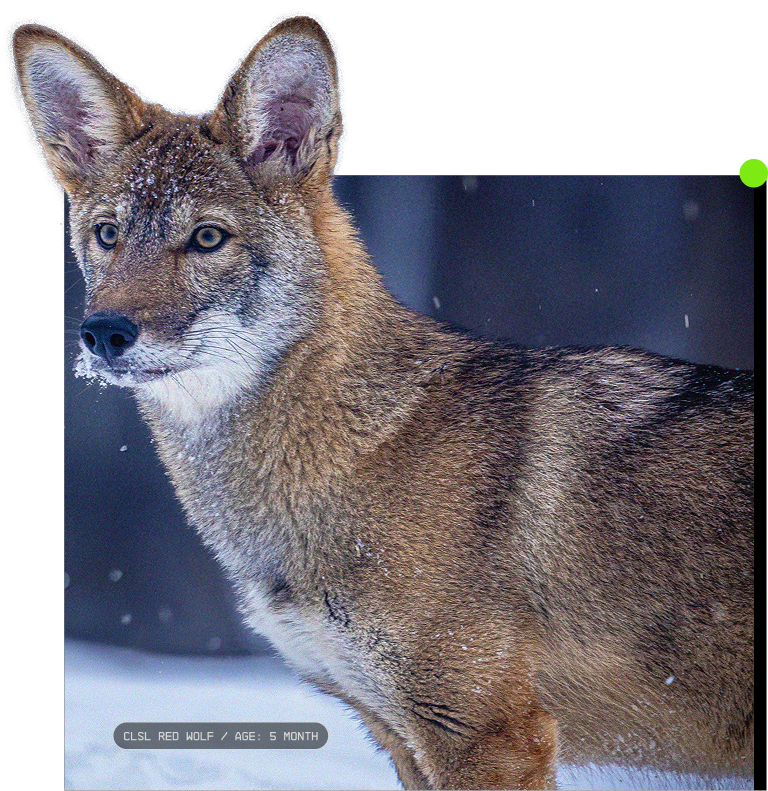

REVERSING FATE





ENSURING
the Dire Wolf
Remains

The dire wolf's role in their ecosystem was undeniably crucial. Their absence as apex predators formed a noticeable void—leaving a disruption in the natural order in its wake.
Today, the planet’s ecosystems continue to struggle at the hands of imbalance and diminishing biodiversity. Hence, a need for the continued wolf restoration and conservation becomes more apparent every day.



"The dire wolf project is surreal and unreal at the same time. It’s recreating reality that stemmed from reality, from millennia ago. To think that in this day dire wolves aren’t just mythical illusions and tales told in movies that we believe may have had origins in reality... now, we have the science and ingenuity to bring life back to once existing reality. Colossal is drastically changing the prognosis for countless endangered species around the world. The company’s work to combat extinction of the red wolf creates hope for so many other critically endangered species fighting for survival."
Hon. Aurelia
Skipwith
Director of the U.S. Fish & Wildlife Service and Colossal Conservation Advisory Board Member
DIRE WOLF MYTH No. 3
& facts facts
A wolf pack is led by an “alpha” male and female in constant dominance.
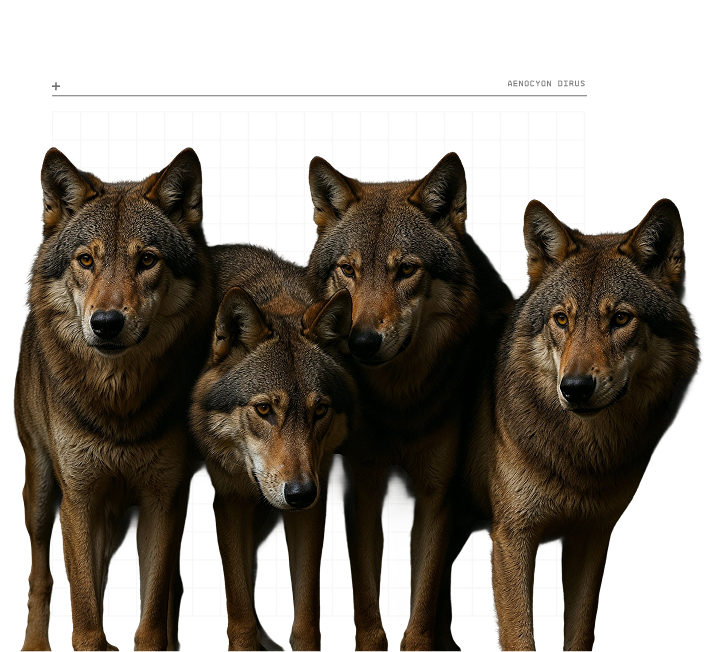

The concept of an "alpha" wolf is outdated and largely misunderstood.
In the wild, wolf packs are typically family units — made up of a breeding pair (often referred to as the “parents”) and their offspring from one or more years. These family-based structures operate through cooperation, not dominance, and leadership is based more on experience and caregiving than aggressive control.
The term “alpha wolf” originated from early wolf studies conducted in the mid-20th century, particularly by animal behaviorist Rudolf Schenkel in 1947. These studies were based on captive wolves, which were unrelated individuals placed in enclosures — creating artificial hierarchies and unnatural stress.
Pack Dynamic
Wild wolf packs are families, not rigid hierarchies.
CULTURE
The breeding pair (parents) guide the pack, but not through dominance — it's about cooperation, nurturing, and experience.
Outdated and Overused
The “alpha” label persists in pop culture, but it’s not supported by modern science.








EARTH’SECOSYSTEM
ONTHEEDGE
EARTH’S
ECOSYSTEM
ON THE
EDGE

Today, the planet’s ecosystems continue to struggle at the hands of imbalance and diminishing biodiversity.

Hence, a need for the dire wolf's restoration becomes more apparent every day. Mankind stands at a precipice, working together to reintroduce extinct species and recalibrate nature’s natural balance. Rest assured, Colossal is leading the way, with expertise in a wide range of practices—AI, machine learning, cloning, bioethics, computational biology, genetic engineering, exogenous development, advanced technology, animal conservation, research methods, rewilding and, of course, de-extinction.
Visit Our VirtualLaboratory Page +
PREVENTING
DIRE
CONSEQUENCES





A chain reaction
If the metaphorical “circle of life'' speaks to anything, it’s our planet’s natural need for balance. Such is a concept reinforced by the existence of food webs, more commonly known as “the food chain.” Regardless of what you call it, each one is composed of tiers, with an apex predator at the very top.
By design, every species in a food chain must rely on the existence of the species above, below or beside it in order to maintain balance. So, when an apex predator disappears from its natural environment—or the top of its food chain—the unmitigated population growth of so many remaining prey species will have significant ecological consequences.







"Our world is grappling with a biodiversity crisis that demands groundbreaking solutions to slow the global loss of species. Colossal stands at the forefront of this monumental undertaking as they pioneer novel technologies through de-extinction projects, such as the dire wolf, that are poised to revolutionize the way we safeguard extant species like the red wolf. The tools Colossal has developed for de-extinction will radically improve conservation practitioners’ abilities to ensure population redundancy and genetic viability for dwindling species, thus changing how we conserve endangered wildlife."
Kristin Brzeski
Ph.D.
Conservation Geneticist
& Wildlife Ecology
Researcher






How De-Extincting The Dire Wolf led to Conservation Breakthroughs





"Whether due to natural or human-induced changes in climate, habitat and food source, the extinction of untold number of species is a loss to our planet’s history and biodiversity. Modern genetics lets us peer into the past, and modern genetic engineering lets us recover what was lost and might yet thrive. Along the way, it invents the tools that let us protect what is still here. As humans we have a unique capacity and moral obligation to steward the earth for the benefit of ourselves and all living things, for now and for the future."
Alta Charo, J.D.
Professor of Law &
Bioethics at theUniversity of Wisconsin
and Colossal Head of Bioethics









Whether due to natural or human-induced changes in climate, habitat and food source, the extinction of untold number of species is a loss to our planet’s history and biodiversity. Modern genetics lets us peer into the past, and modern genetic engineering lets us recover what was lost and might yet thrive. Along the way, it invents the tools that let us protect what is still here. As humans we have a unique capacity and moral obligation to steward the earth for the benefit of ourselves and all living things, for now and for the future.

Alta Charo, J.D.
Professor of Law & Bioethics at the
University of Wisconsin
and Colossal Head of Bioethics
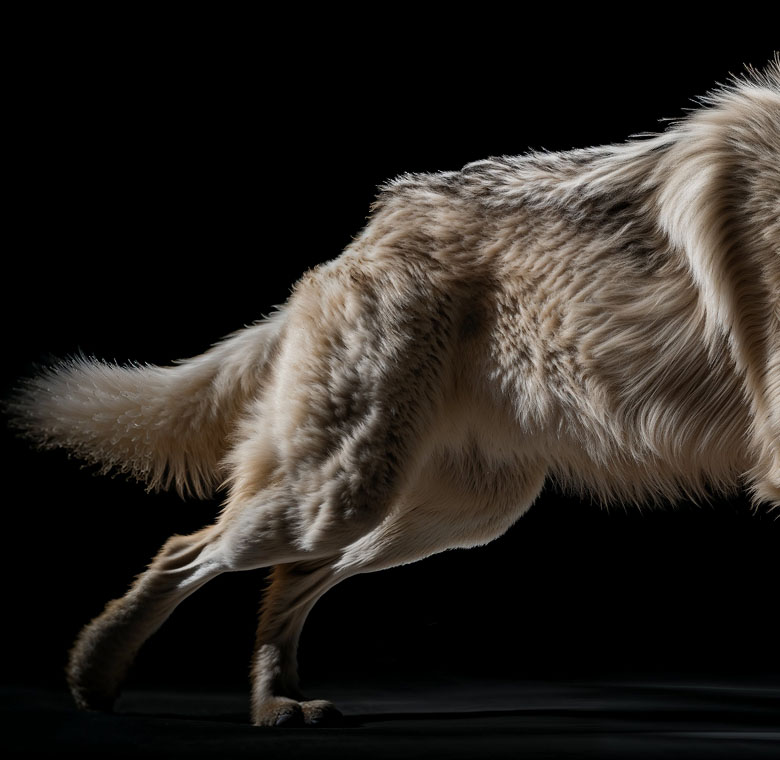
Conserving
Living
wolves
INdex
MAKING STRIDES
TOWARD
THRIVING WOLF
POPULATIONS
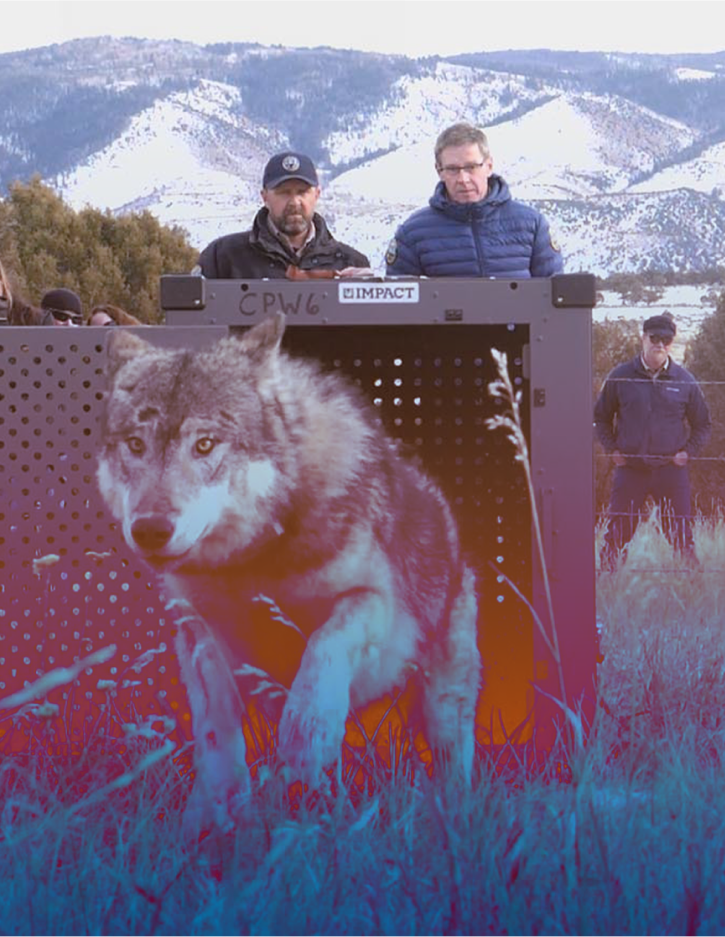
MAKING STRIDES
TOWARD
THRIVING WOLF
POPULATIONS


Colossal is working to uncover genetic diversity thought to be lost in red 'ghost' wolves that can restore lost genetic diversity into the red wolf. Today, red wolf conservation utilizes breeding programs in an effort to help restore their population numbers.



Working to Support the Most Critically Endangered Wolf

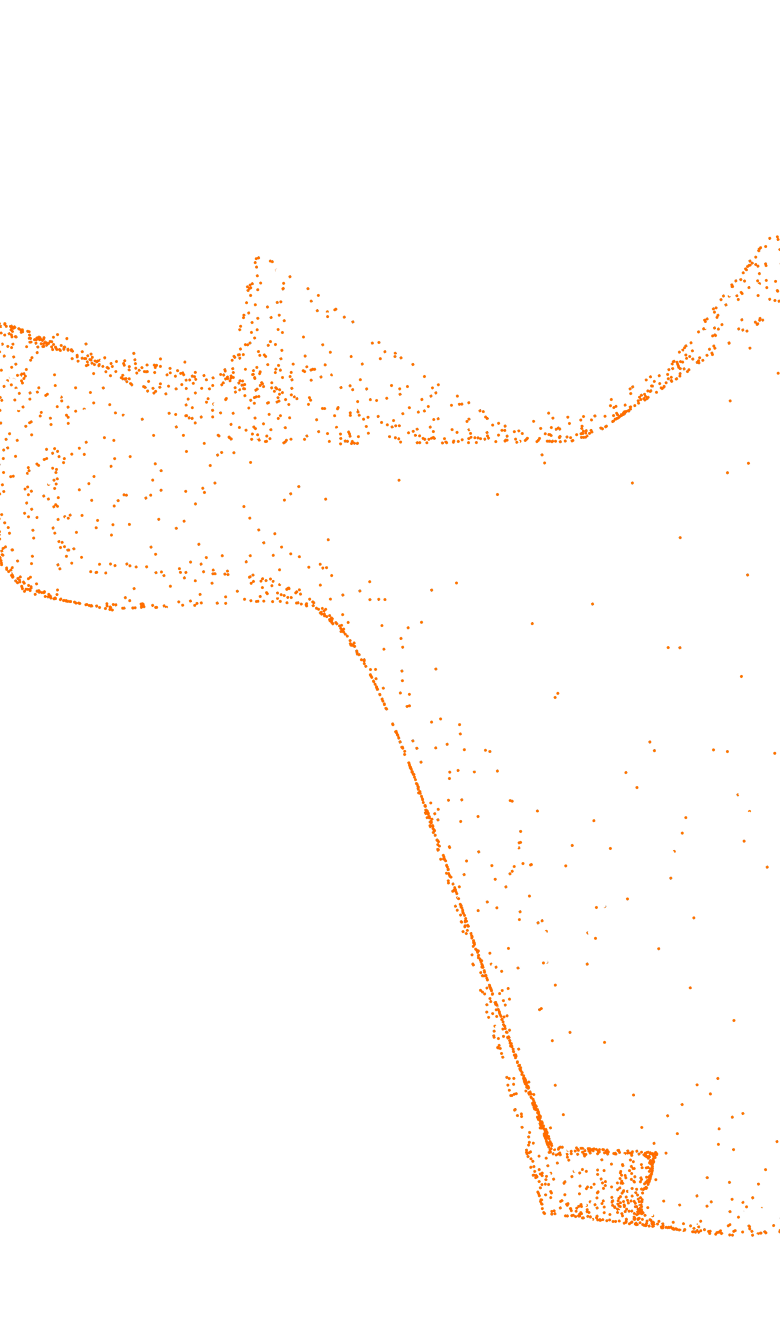



As of April 2024, there are an estimated 18-20 red wolves living in the wild, 17 of which are collared (tagged) or confirmed.

Wild red wolves are found only in a small area near the Alligator River and Pocosin Lakes National Wildlife Refuges in North Carolina.
However, these programs encounter one major struggle—the lack of a genetically diverse population, which threatens the survival of the species at hand. Fortunately, the technologies developed for the dire wolf are facilitating the ability to add genetic diversity into these ‘genetically-bottlenecked’ animals.




The
‘ghost’
RED Wolf
Canis rufus
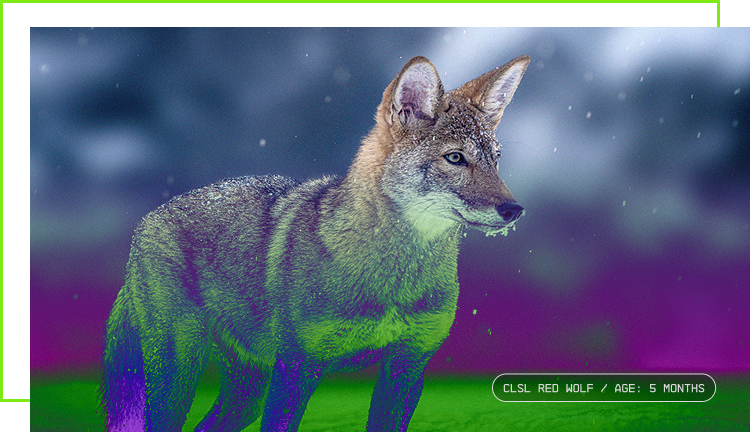
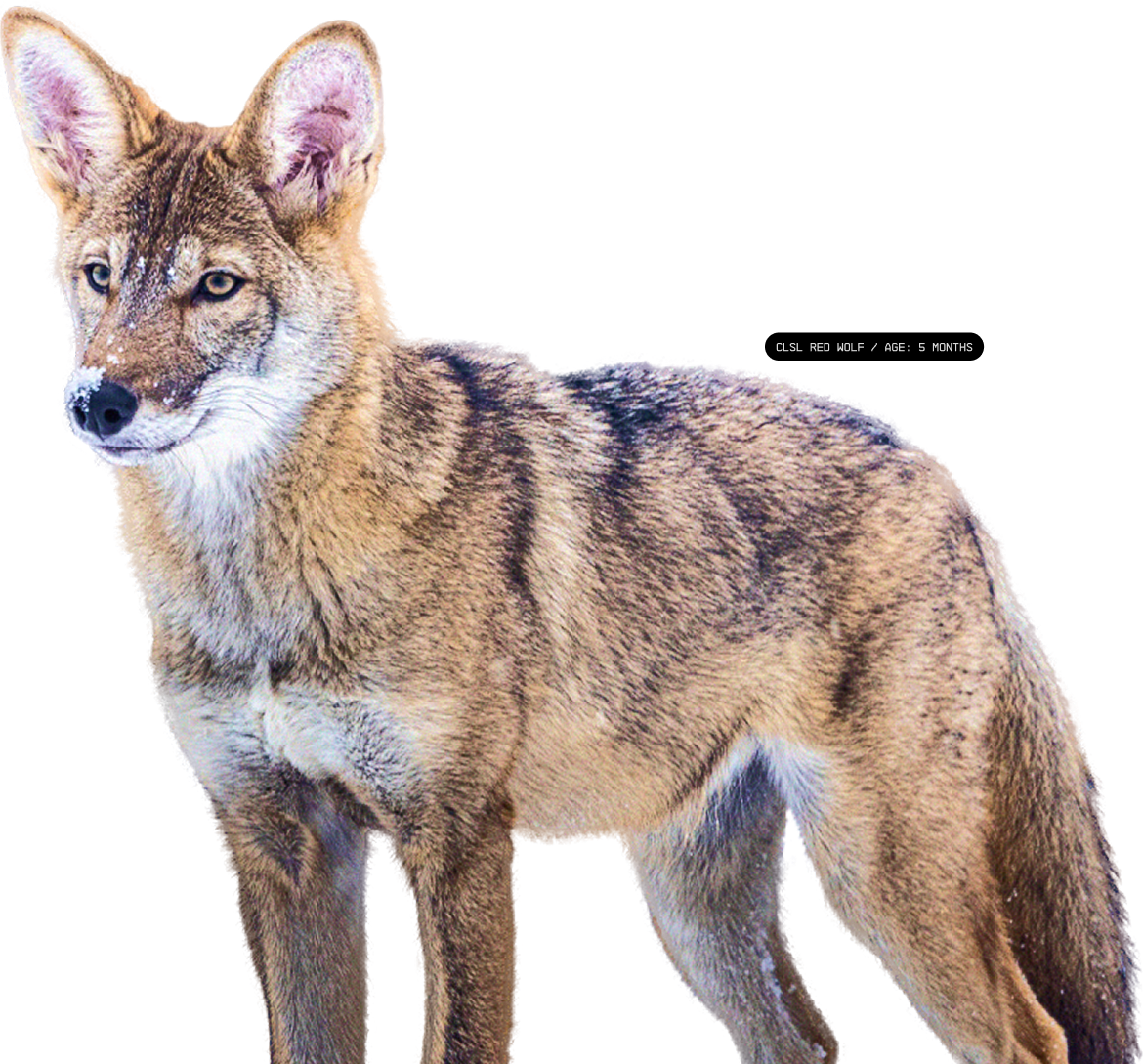


- Class: Mammalia
- Order: Carnivora
- Family: Canidae
- Genus: Canis
- Region: Eastern North Carolina
- Avg. Length: 4.2 to 5.6 ft | 128 to 171cmAvg. Length:
4.2 to 5.6 ft | 128 to 171cm - Avg. Weight: 45 to 80lbs | 20 to 36kgAvg. Weight:
45 to 80lbs | 20 to 36kg -
Est. Current Population: 18-20 in the wild257 in breeding programsEst. Current Population:
18-20 in the wild 257 in breeding programs

The red wolf is known for the iconic copper fur on its ears, neck and legs. They are the world's most endangered wolf.
>>>>>>



A Healthy Breeding Population
Through nuclear transfer and cloning, Colossal will reintroduce fertile new breeding animals—those with genetic backgrounds not currently present in the breeding program—back into the gene pool. What may seem like a small contribution, will actually result in a more robust and diverse wolf population. In turn, this will lead to more resilient wolf packs with an ability to survive and thrive upon reintroduction into their natural habitats.

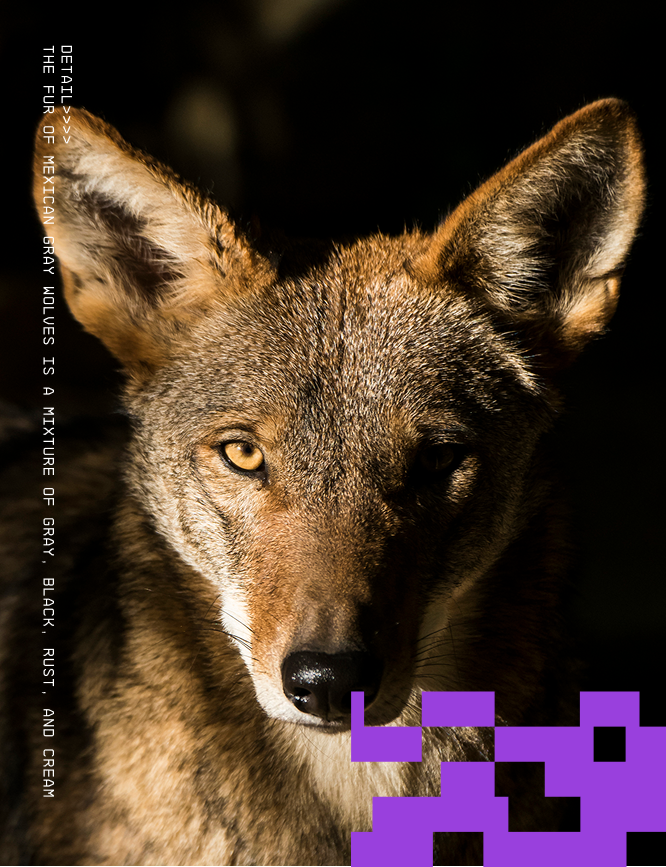


A conservation success story
and model for the dire wolf’s conservation success story & model for the dire wolf’s return








As is true for most animals, eons of interbreeding and evolution created a modern version that is smaller than its prehistoric ancestors. However, the gray wolf is still alive today because of its ability to evolve, adapt and persevere.
By combining their DNA with similar species, like jackals, dholes and coyotes, wolves were able to eliminate flawed genetics and produce stronger offspring. And, with the course prehistoric Earth was on, adaptation would be absolutely critical to survival.
Through our ongoing efforts and future endeavors, we intend to remain at the forefront of solving any challenges that may come next. And, as is our habit, our team is ready and willing to see those through to the finish line, too.






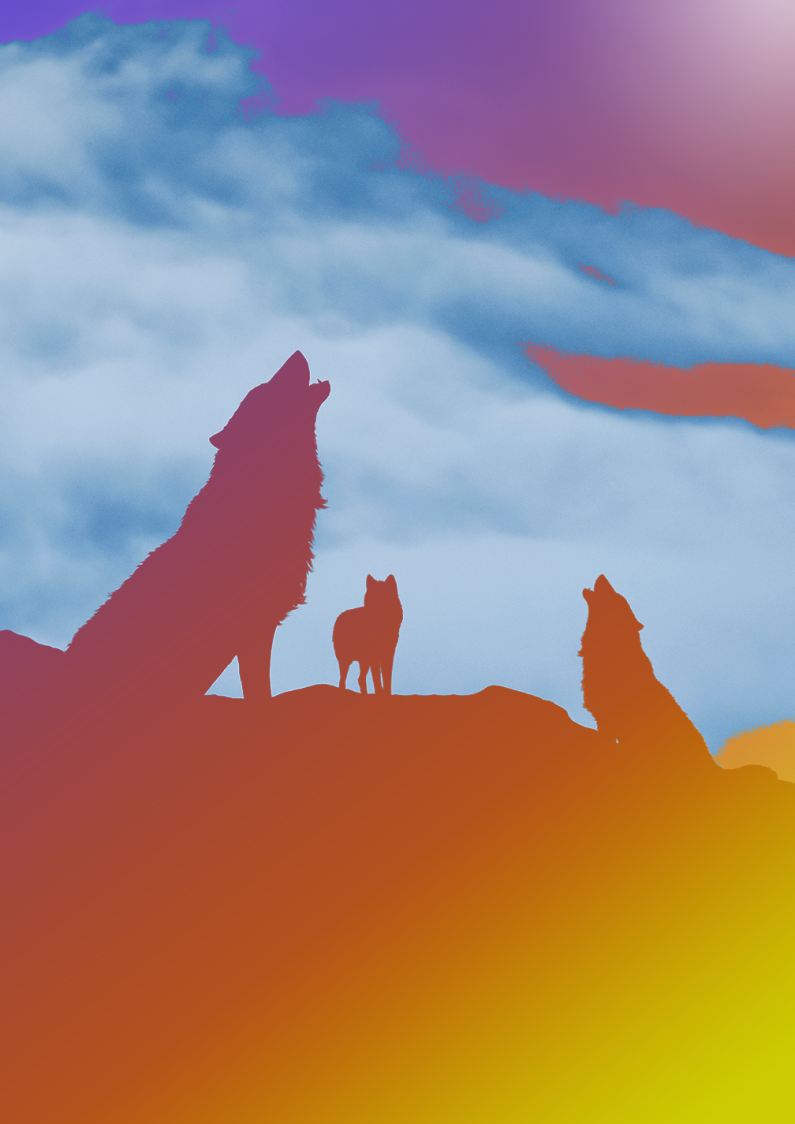

Wolves were hunted and driven out of Yellowstone
Although gray wolves long-ruled the land as Ice Age survivors and apex predators, they weren’t completely impervious to extinction. Over time, they found themselves as vulnerable to endangerment as many other species. While captive wolves were somewhat sheltered from peril, wild population numbers fell due to human-caused factors, such as habitat loss and lack of government protection. And when the last wild gray wolf of Yellowstone National Park died in 1926, stability and biodiversity came to a halt.
With action comes reaction—perfectly evidenced by the cascading effects that would soon befall Yellowstone’s fragile ecological balance.



Grazing Yellowstone Out of House and Home
Without the presence of its largest predator, elk quickly became the top threat to its own environment. Left unchecked, their constant overgrazing led to the eradication of essential vegetation, such as aspen trees, willow trees and cottonwood. It was clear that the missing wolf’s wake created a domino effect as destructive as it was immediate.


Wildlife Biologist & Educator / COLOSSAL CONSERVATION ADVISORY BOARD MEMBER
Forrest Galante
Forrest Galante
Wildlife Biologist & Educator
COLOSSAL CONSERVATION ADVISORY
BOARD MEMBER
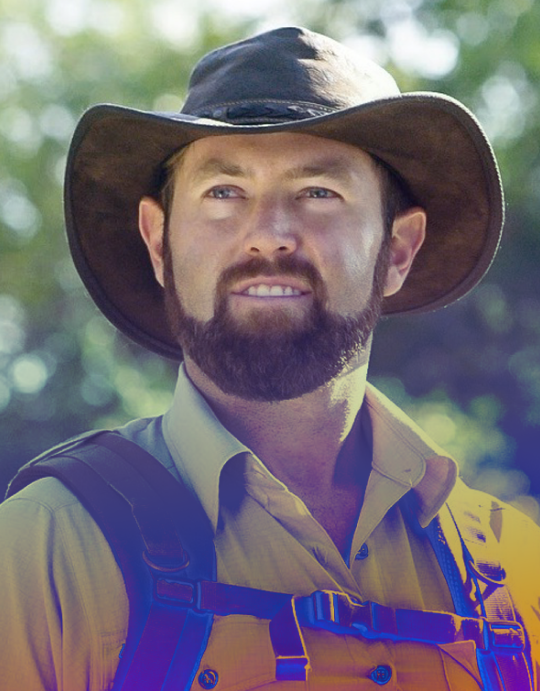

"Bringing back the Dire Wolf is more than just a leap in science; it’s a beacon of hope for wildlife conservation. This monumental achievement demonstrates not only that we have the technology to correct some of our ecological missteps, but also that we can give extinct species a second chance at life. It’s an exciting look into a future where we can actively restore balance to ecosystems, repair biodiversity loss, and inspire a new generation to protect our planet. The Dire Wolf project is proof that we’re capable of more than preservation—we’re stepping into an era of restoration."

Trophic Cascading
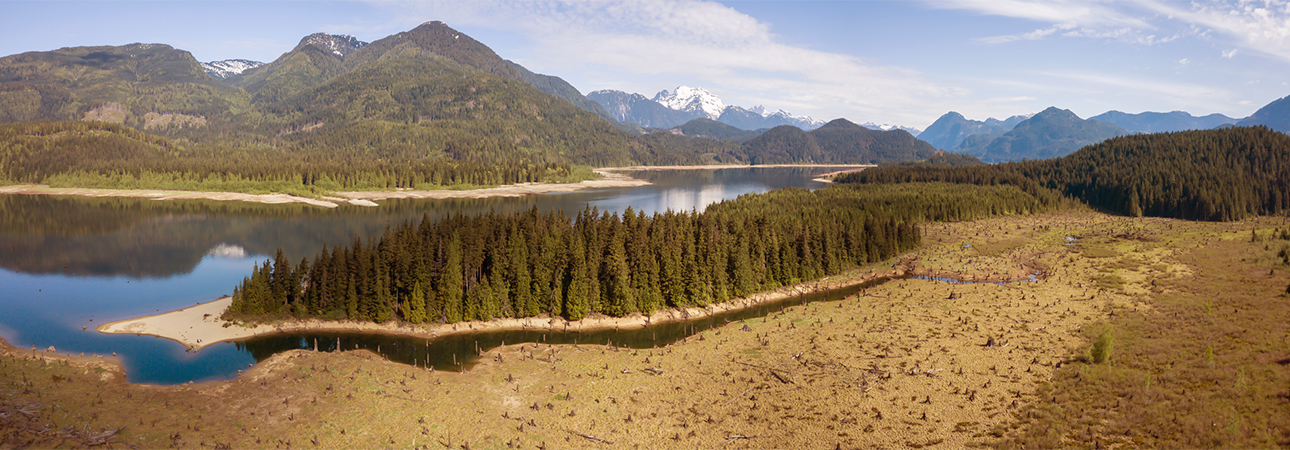
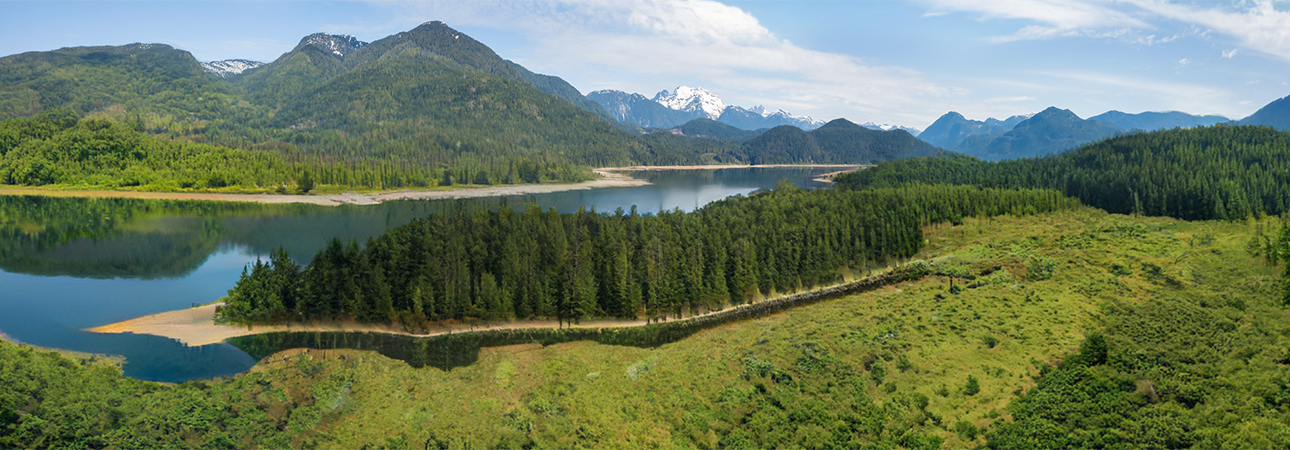
Drag the divider on the image above to view an AI simulation of the effects of trophic downgrading on the environment. The ecosystem on the right has its apex predators.

Trophic Cascading

The gray wolf’s disappearance gave way to trophic downgrading, leaving their habitat unbalanced and under-predated. With the elk moving less, eating more and chipping away at Yellowstone’s landscape, animals such as beavers, coldwater fish and birds were left to face the consequences, too. In response to the gray wolves’ disappearance, these lower-level animal populations suffered warmer water temperatures, waning tree shade, insufficient space to hatch eggs, shrinking food sources and fewer nesting resources.





Trophic
Downgrading
[ THYLACINE > Large Birds > Small Birds > Rodents > Vegetation ]
[ THYLACINE > Large Birds >
Small Birds > Rodents > Vegetation ]
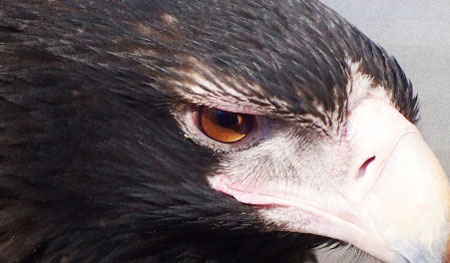
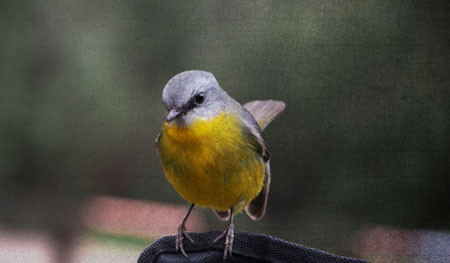
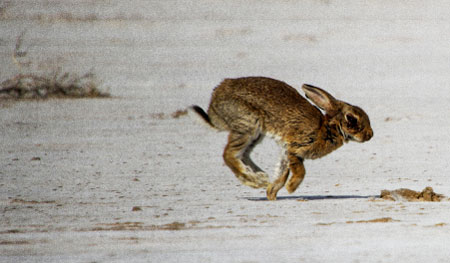

Extinct
APEX
Removal of apex predators throws
ecosystems out of balance
 Learn More On Our
Learn More On Our Thylacine Page +
Extant
APEX
apex predators often play an important role
in maintaining the balance of an ecosystem

A Slippery Slope of Bio Imbalance
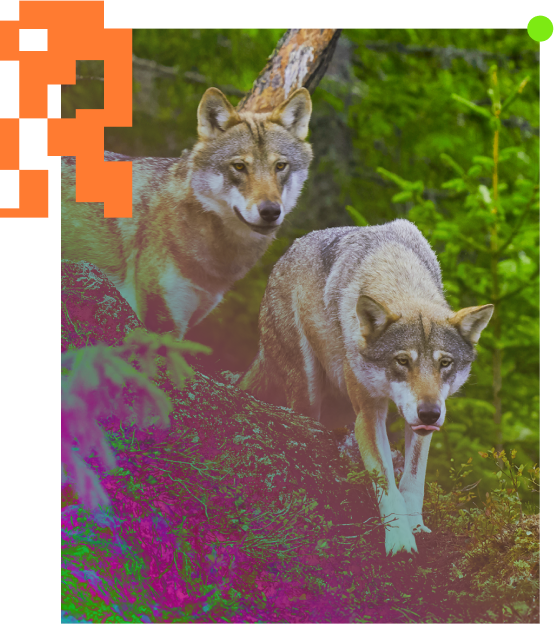
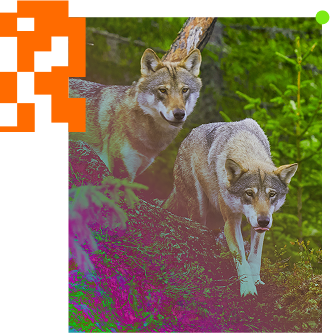
Explosive Population Growth
The most obvious result of the removal of apex predators in an ecosystem is a population explosion in prey species. Predators balance and maintain herbivore populations. The reverse is also true—predator populations are limited by the availability of prey.
[quotation module]
Apex EXTINCTION
Also known as trophic cascading, this phenomenon occurs when an apex predator—such as the dire wolf or, more recently, the thylacine—disappears from its environment. Without any predators to limit population growth, herbivorous prey species reproduce without check.
More herbivores eat more plants, and without anything to control them, they can quickly degrade their habitat, sometimes to the point of impeding plant reproduction and defoliating the habitat. In extreme cases, results include wildfires, floods, invasive species takeovers, proliferation of disease, and complete destruction of the ecosystem.
About The Thylacine +
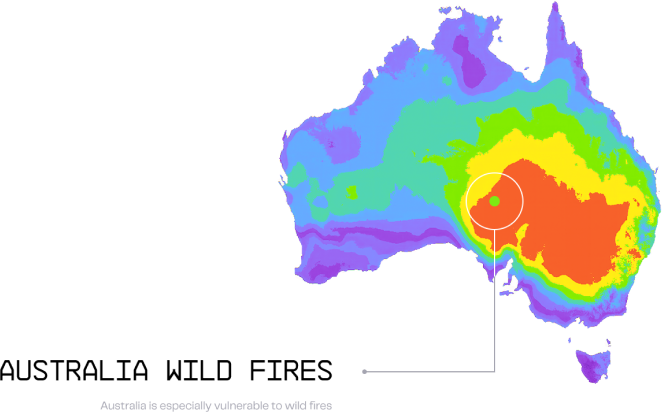

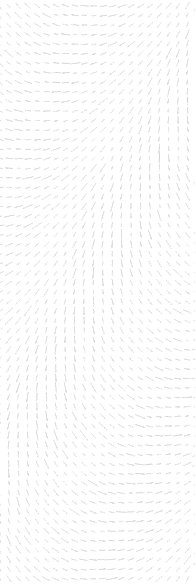

Indigenous people of North America
THE THREE AFFILIATED TRIBES
////////////////////////////////////
Native tribes—in addition to having a rich cultural history—are tough and resilient, seeking companion animals as powerful and majestic as their traditions. Many tribes revere wolves, seeing them not as creatures to domesticate but as an extension of self. They are fierce, adept students of the land. Role models who impart vital survival skills upon the humans with which they share a habitat.

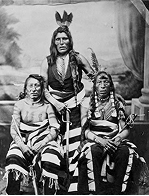
Hidatsa Indians Fort Bufford Scouts Peabody Museum


Native Americans’ relationship with wolves is not one-sided. It is reciprocal, with both species sharing food and knowledge. For example, the Blackfoot tribe observed wolves hunting buffaloes—singling one out, exhausting it and driving it to its demise—and mirrored these tactics to improve their own hunting. This bond, born of mutual respect, was commonly reciprocated by sharing food with their four-legged allies. Living in harmony, wolves and tribes form a partnership, each benefiting from the other’s strengths.
The de-extinction of the dire wolf is more than a biological revival.
Its birth symbolizes a reawakening – a return of an ancient spirit to the world. The dire wolf carries the echoes of our ancestors, their wisdom, and their connection to the wild. Its presence would remind us of our responsibility as stewards of the Earth – to protect not just the wolf, but the delicate balance of life itself. The work of the team at Colossal Biosciences is not only significant to our lands and people, but for conservation efforts across the globe. The ability for technological innovation to bring forth something so culturally and spiritually significant to indigenous people is paralleled by the far reaching impacts that this technology provides for the future of stewardship on our planet in species diversity and conservation."




NEZ PERCE
The Nez Perce, or Nimiipuu, are deeply connected to the natural world through their ancestral lands in the Pacific Northwest, which stretch from the high plateaus to fertile river valleys.
Renowned for their expert horsemanship, the Nez Perce were early breeders of the appaloosa horse, a skill that exemplifies their ingenuity and understanding of animal kinship. Wolves hold a special place in Nez Perce culture, symbolizing balance, strength and the interconnectedness of all living beings. The tribe's oral histories and ceremonies emphasize respect for the wolf’s role as a teacher and protector within the ecosystem. After being forcibly relocated in the 19th century, the Nez Perce endured immense hardship but remained steadfast in preserving their identity and stewardship practices. Today, they actively participate in conservation efforts, blending traditional ecological knowledge with modern science to restore wolves to their rightful place on the land.



OUR INDIGENOUS PARTNERS
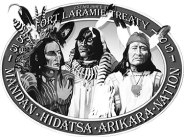
MHA Nation
Learn More +
The Mandan, Hidatsa and Arikara—known collectively as the MHA Nation—have a history deeply tied to the Missouri River and the surrounding plains. For centuries, their agricultural ingenuity and communal values sustained them, while their spiritual traditions honored the intricate relationships between land, water and life.
INDIGENOUS LED
Learn More +
Indigenous Led champions cultural and ecological restoration through community-driven initiatives. By integrating traditional knowledge with modern conservation practices, they ensure that Indigenous voices remain central to efforts that heal the land and its inhabitants.
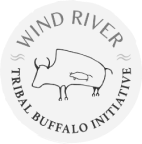
Wind River Tribal Buffalo Initiative
Learn More +
The Wind River Tribal Buffalo Initiative revitalizes a cornerstone of Indigenous life—the buffalo. Their work restores ecological balance while fostering cultural traditions, ensuring this keystone species thrives for future generations.
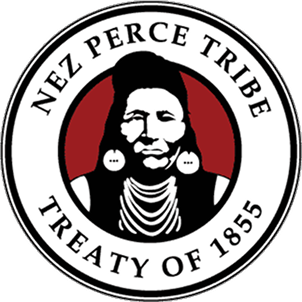
Nez Perce
Learn More +
The Nez Perce Tribe upholds many traditional lifeways, including fishing, hunting, gathering, and traditional ceremonies and celebrations. The Nez Perce Tribe is a federally recognized tribe in north-central Idaho with more than 3,500 enrolled citizens. Headquartered in Lapwai, ID, the Nez Perce Reservation spans about 770,000 acres.

"The Nez Perce Tribe (Niimiipuu) holds a deep connection to our wolf (Himiin) relatives and has long been at the forefront of their recovery and management. In partnership with Colossal, we look forward to leveraging next-generation conservation technologies—advanced by dire wolf de-extinction—to protect and restore wolves and other species crucial to our people. We welcome this collaboration to ensure healthy populations of our esteemed relative, Himiin, across their traditional homelands for generations to come.”
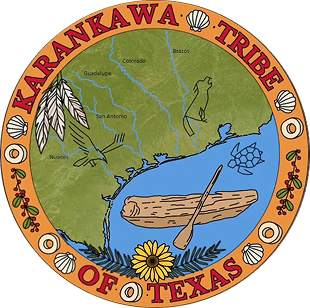
Karankawa
Tribe of Texas
Learn More
+

The Karankawas, a semi-nomadic people of the Texas Gulf Coast, once thrived with five major clans before European contact, skillfully resisting colonization for centuries. Despite population decline due to disease, displacement, and violence, the Karankawas continue to preserve their culture, language, and ancestral lands through activism and education.

"The critical de-extinction of the dire wolf measurably advances the conservation and recovery program of Galveston’s red wolf, a species once believed to be extinct. We Karankawa peoples highly resonate with the need to address and correct inaccurate extinction misinformation. Our people were also wrongly deemed to be extinct so we are kindred spirits with our four-legged relatives."

"The extinction crisis is a massive, mostly unattended, and growing worldwide problem. I applaud Colossal for taking bold and innovative steps to arrest and reverse the crisis by developing cutting edge genetic techniques to undergird reintroduction efforts of imperiled species. By collaborating with Dr. vonHoldt on red wolf recovery, Colossal creates potential to increase the genetic diversity of this species which exists only because of a captive population founded by a paltry 14 individuals. Perfecting genomic tools to integrate “ghost alleles” from Gulf Coast canids would increase red wolf genetic diversity and generate knowledge for recovering other imperiled species, like the bolson tortoise, that are compromised by restricted ranges and reduced genetic diversity."
Mike Phillips
Director, Turner Endangered Species Fund

CONNECTING SPIRIT WITH NATURE

OUR MISSION—THE THREE AFFILIATED TRIBES WILL PROVIDE TO THE TRIBE AND PEOPLE, MAXIMUM QUALITY SERVICES, BY BEING RESPONSIBLE, ACCOUNTABLE, RESPECTFUL, CARING, AND WILL INCORPORATE THE TRADITIONAL VALUES OF OUR ELDERS AND ANCESTORS.
The Mandan, Hidatsa, and Arikara tribes, collectively known as the Three Affiliated Tribes, have a rich history rooted in the Great Plains and Missouri River area. Despite their different origins and traditions, each tribe shares a common culture centered around agriculture, trade and a deep spiritual connection to the land, which is preserved through oral traditions and archaeological evidence.
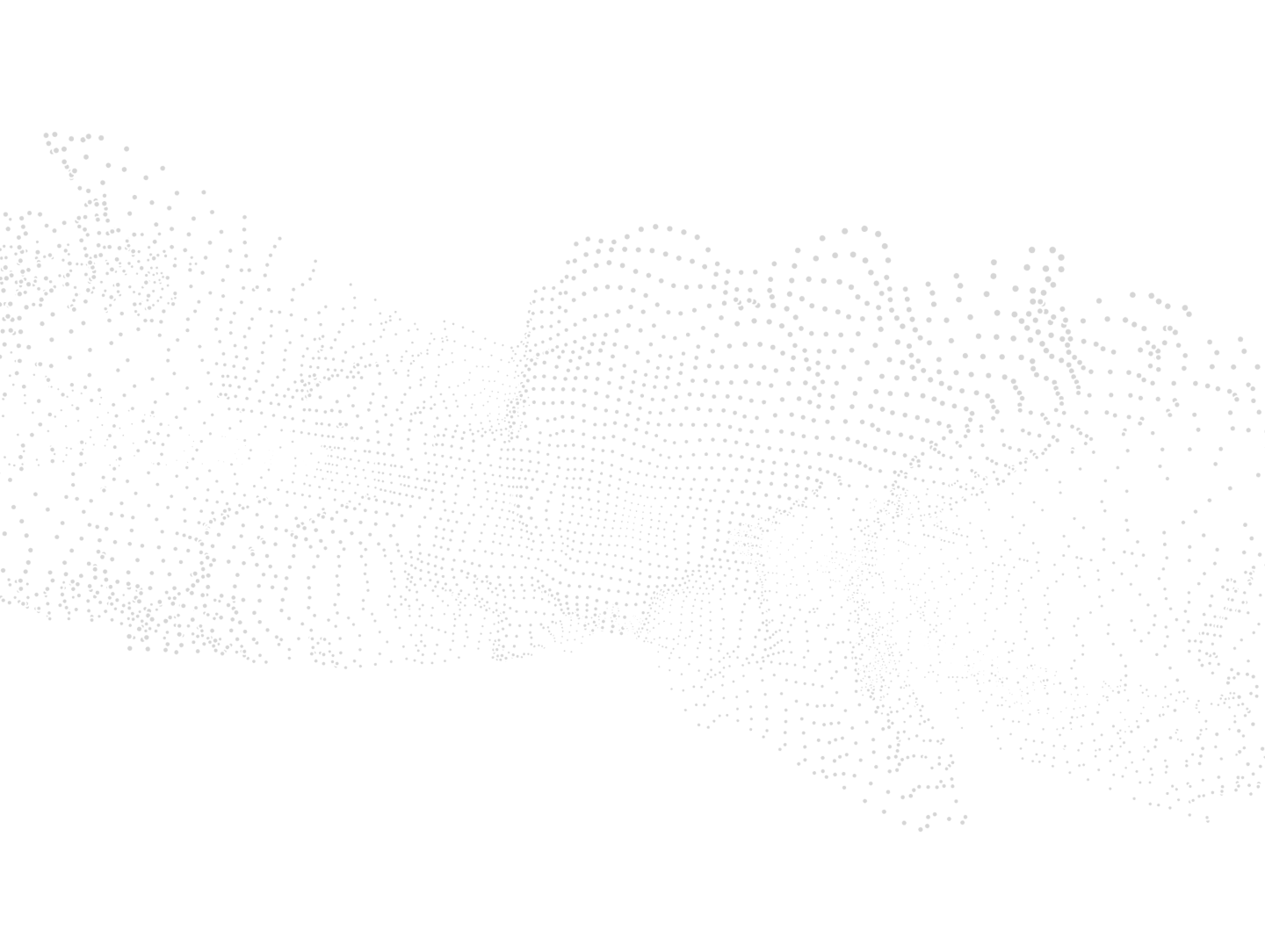
Karankawa
The Karankawa trace their origins to the Gulf Coast, where they once thrived as coastal foragers, expert fishers and navigators of the waterways. Their traditions celebrate the intricate relationship between land, sea and community, emphasizing sustainability and respect for the natural world.
Known for their adaptability, the Karankawa's lifeways were shaped by the rhythms of the tide and the abundance of the coastal plains. Despite nearly being erased by colonial forces, the tribe is now reclaiming its cultural identity through language revitalization, traditional crafts and ceremonies. Wolves, like the tides, were seen as powerful forces of nature, teaching survival and balance in a world of constant change. Today, the Karankawa continue to honor their ancestors by protecting the environment and ensuring that their culture thrives alongside the ecosystems that sustained them for centuries.





NAMING THE WOLF
Neka
Kayda
GHOST DAUGHTER
The Karankawa have given the world’s first cloned red 'ghost' wolf a name rooted in their heritage—Neka Kayda, meaning “Ghost Daughter.” This powerful name honors both the ancestral red wolf DNA that persists against the odds and the Indigenous people who have long shared the land with these resilient canids.
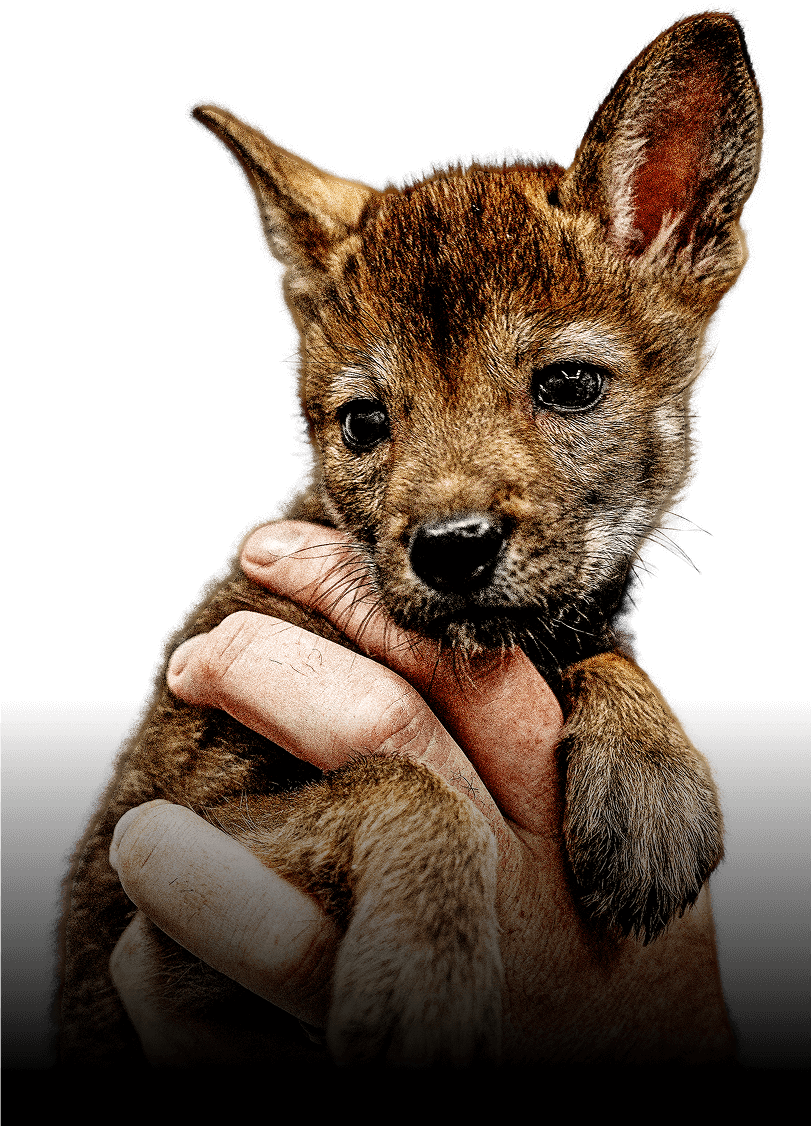 Clsl Red Wolf / age: 1 month
Clsl Red Wolf / age: 1 month
GHOST DAUGHTER
The Karankawa have given the world’s first cloned red 'ghost' wolf a name rooted in their heritage—Neka Kayda, meaning “Ghost Daughter.” This powerful name honors both the ancestral red wolf DNA that persists against the odds and the Indigenous people who have long shared the land with these resilient canids.









Saving a Species: Our Mission to Restore the Red Wolf Back to Nature

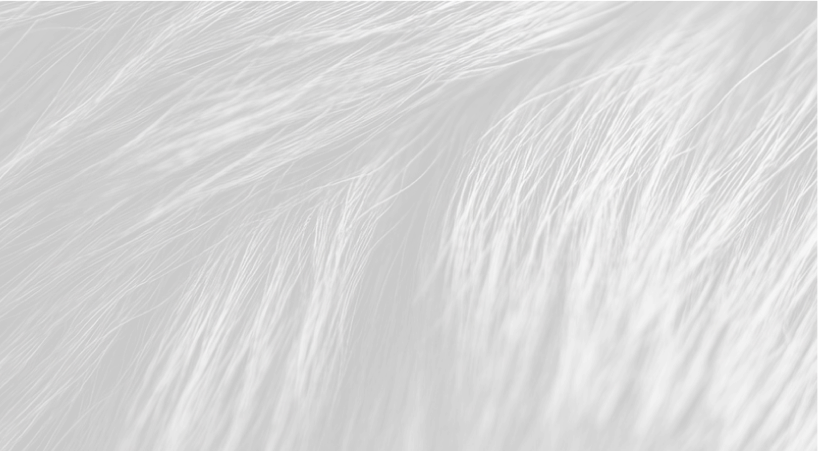

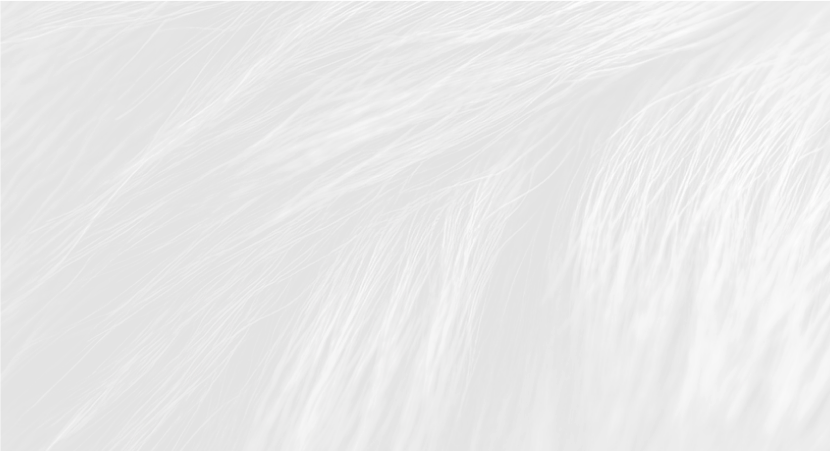




INTO THE MYSTIC
ENTERING THE SPIRIT REALM WITH THE AMERICAN DIRE WOLF

ONE UNIFIED NATION, THREE INDIGENOUS TRIBES.
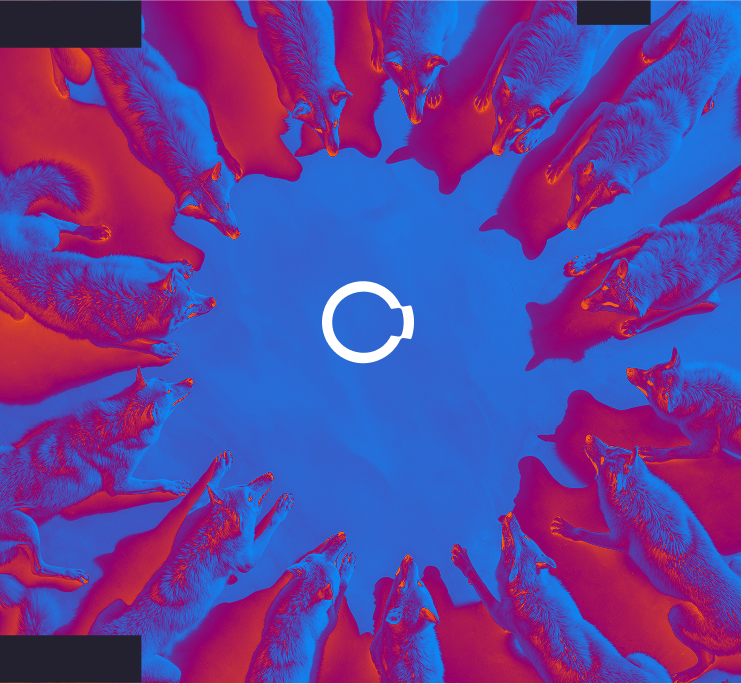

Strength in Unity.
Arikara
The Arikara, also known as Sahnish, are a Native American tribe originally from the Great Plains, primarily located in what is now North Dakota. Traditionally semi-nomadic, they relied on agriculture, trade, growing crops—such as corn, beans and squash—and hunting bison to sustain their dynamic lifestyle. The Arikara tribe’s spiritual beliefs are centered around a deep connection to the natural world, with ceremonies and rituals honoring the earth, sky and various animal spirits. They believed in a Great Spirit and had various religious leaders, including shamans, who performed rituals to ensure bountiful harvests and successful hunts.
+HIDATSA
The Hidatsa, originally known as the Minitari, reside in the upper Missouri River area in North Dakota. Similar to the Arikara, they practiced agriculture—growing crops like corn, beans and squash—and supplemented their diet through hunting and fishing. Their spiritual life is deeply tied to their agricultural practices, with ceremonies dedicated to the corn spirit and other natural forces. The Hidatsa believe in a complex system of spiritual beings, with each clan having its own guides and rituals.
+Mandan
The Mandan are another tribe originally of the Great Plains, known for their historical villages along the Missouri River in present-day North Dakota. Like the Hidatsa and Arikara, they were skilled agriculturalists, growing many of the same crops—corn, beans, squash, as well as tobacco—and were known for their skill in trading. Mandan spiritual beliefs included a pantheon of gods and spirits connected to nature, particularly the Great Spirit and various animal spirits. They practiced elaborate religious ceremonies, such as the Okipa, which included fasting, dancing, and rituals to ensure the welfare of the tribe. The Mandan had a profound respect for the natural world, which was reflected in their myths, art, and daily practices.
Today, there are over 17,000 enrolled members of the Mandan, Hidatsa and Arikara Nation.
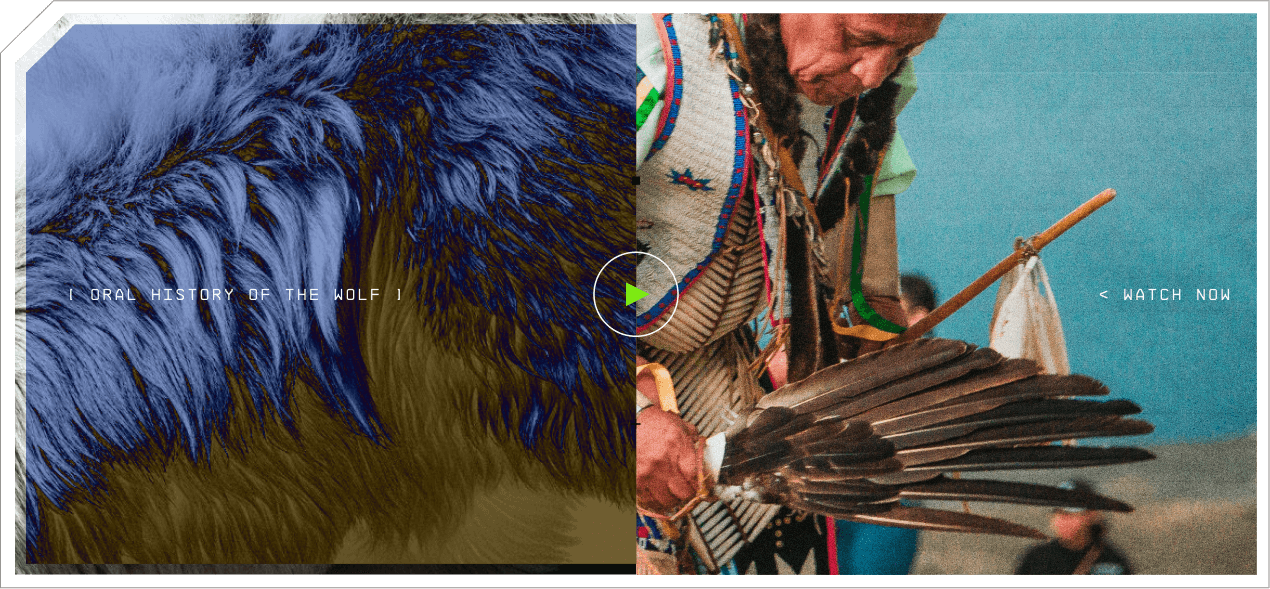
[ . THE ORAL HISTORY OF THE WOLF ]
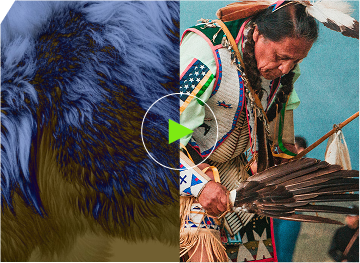

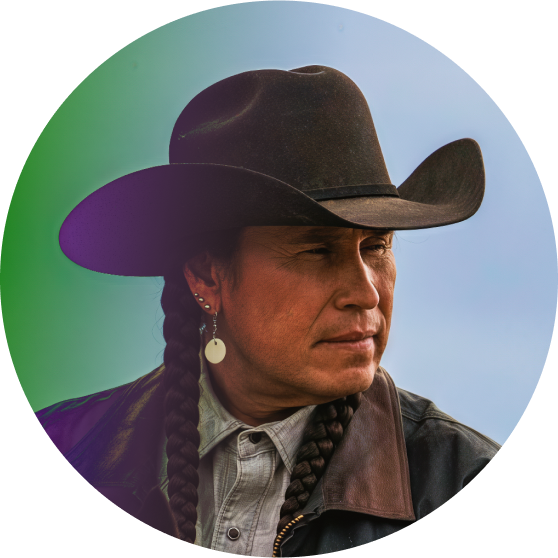

[Quotation Module ]
"Wolves serve a vital role in our community’s culture, history and way of life. Birthing and re-integrating important extinct and endangered wolf species will help to preserve and restore the land to the way it was originally made to be. I am sure there are wolves in heaven. The Great Creator made them also.
The human race does not know how to heal the land. Original creation does. The First of Creation gives us the ability to understand the original design of the planet and the spiritual significance. With the knowledge that has been dormant in our DNA, we must reawaken that memory within ourselves to the tradition of ‘Co-Existence’ for the sake of a healthy land again. They are the healers. If we care about our children, we will find pathways to ensure co-existence.
The further back we look, the further ahead we go."






